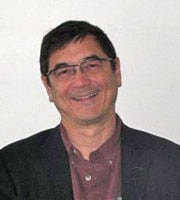Treaty negotiations for the K’ómoks First Nation have been ongoing for more than 20 years. Five years have passed since the critical fourth-stage Agreement-in-Principle (AIP) was reached.
“It’s a slow-moving beast,” said Mark Stevenson, chief negotiator for the KFN. “We’re still in final agreement negotiations. We haven’t really seen anything on the ground.
“It’s still a slow, plodding process. But we are more hopeful. On one aspect, negotiations around Goose Spit are going quite well. We have a whole series of negotiations going on with that.”
In 2014, the federal government had said negotiation of salmon-related fisheries issues at treaty tables in B.C. would be informed by findings and recommendations of the Cohen Commission — an inquiry into the decline of sockeye salmon in the Fraser River. Stevenson said DFO has since come to the table, but is going through a mandate change.
“But there is a better spirit of optimism at the table,” he said. “We’re going to give them time.”
The AIP offers the K’ómoks people $17.5 million and about 5,000 acres of land, including the return of the tip of Goose Spit, which had been a contentious stumbling block. It also includes about 2,000 acres at the Royston woodlot, and land at Williams Beach, Kelsey Bay, the base of Mount Washington and Lot DL7 near Union Bay.
With federal funds, the provincial government purchased the Sage Hills property in Royston in 2012.
The acreage — which is adjacent to several parcels of land the KFN acquired from Kensington Island Properties — will be included in the final settlement package.
Stevenson said the KFN is expecting a land and cash deal in the next six months.
